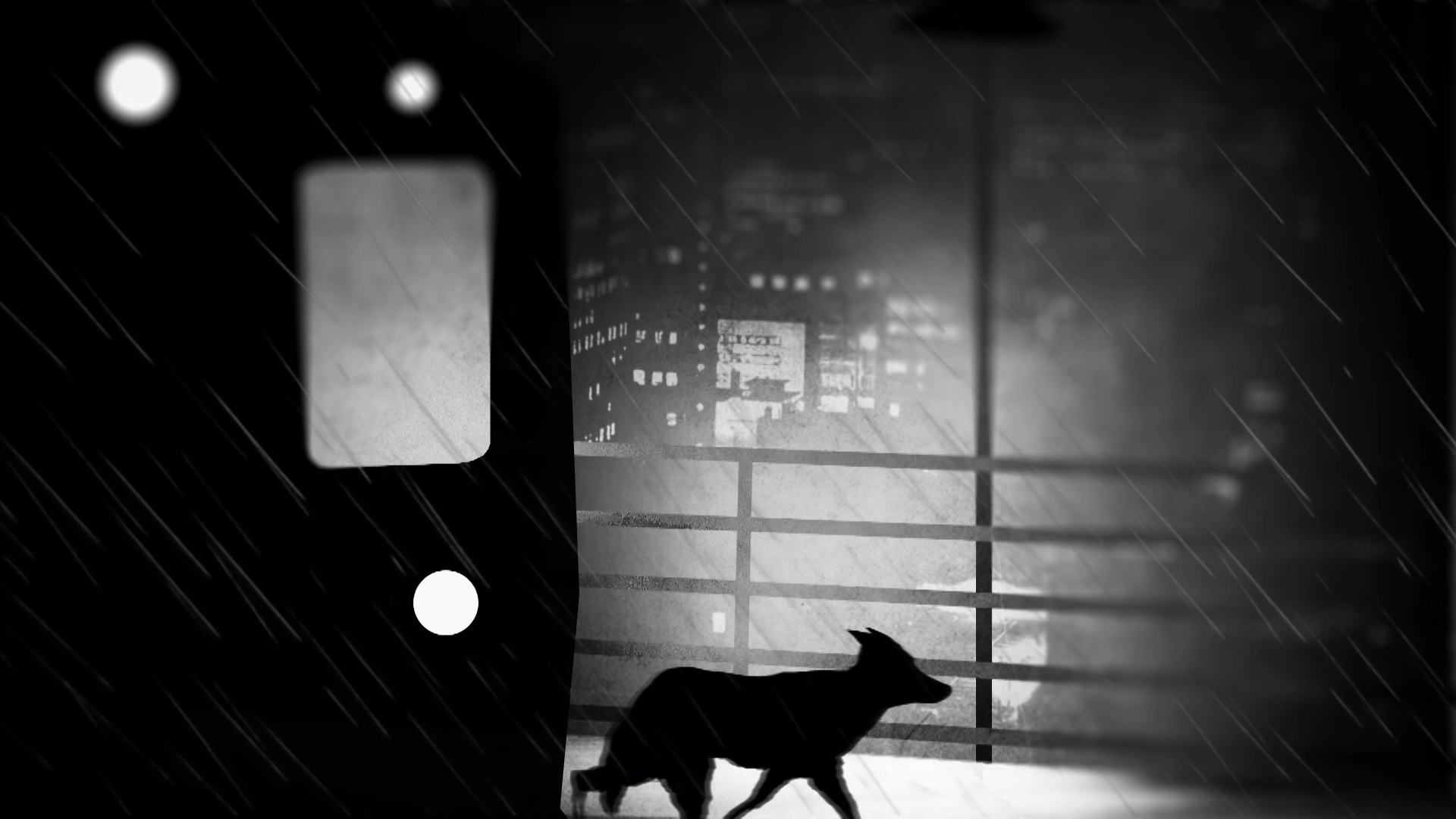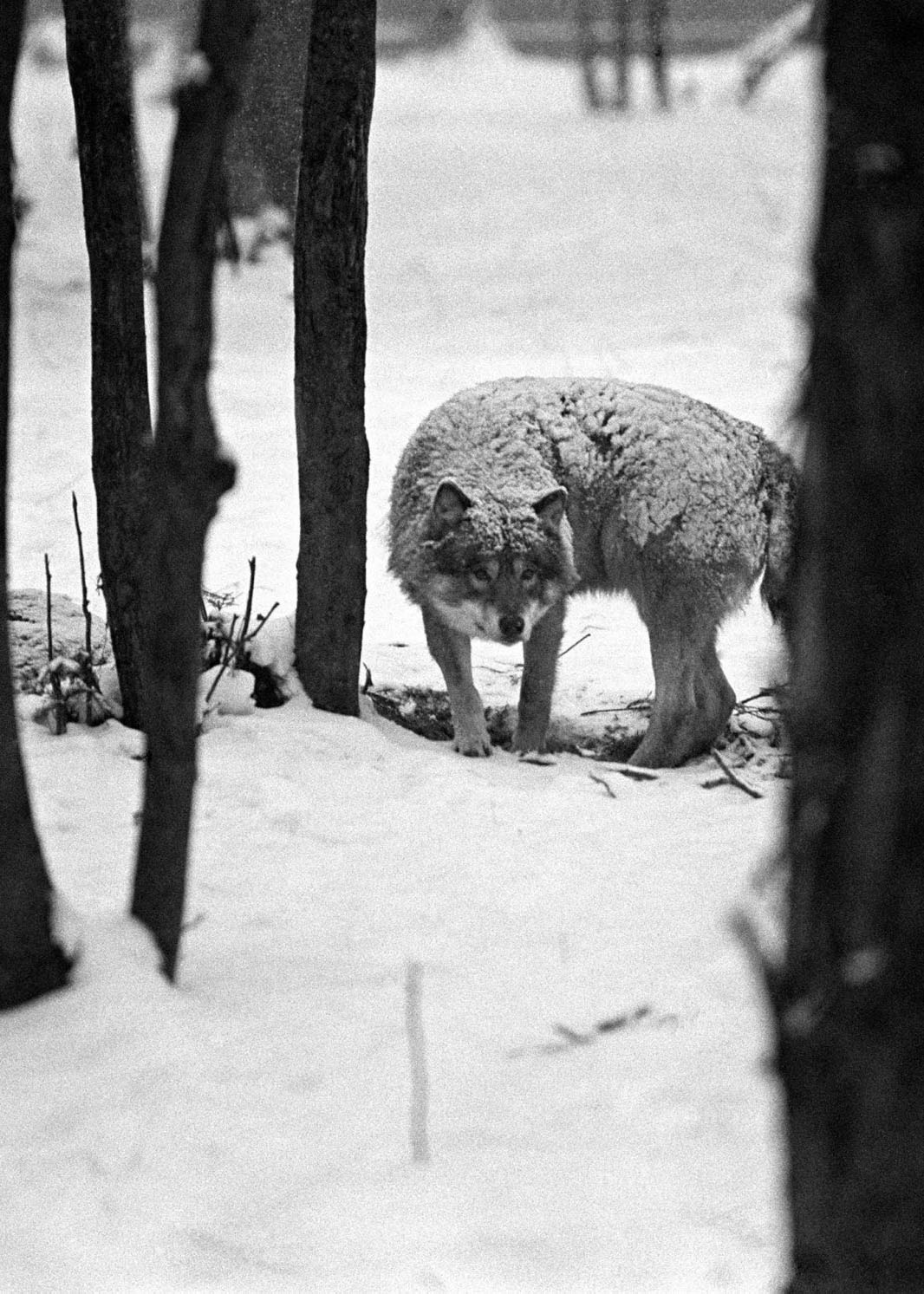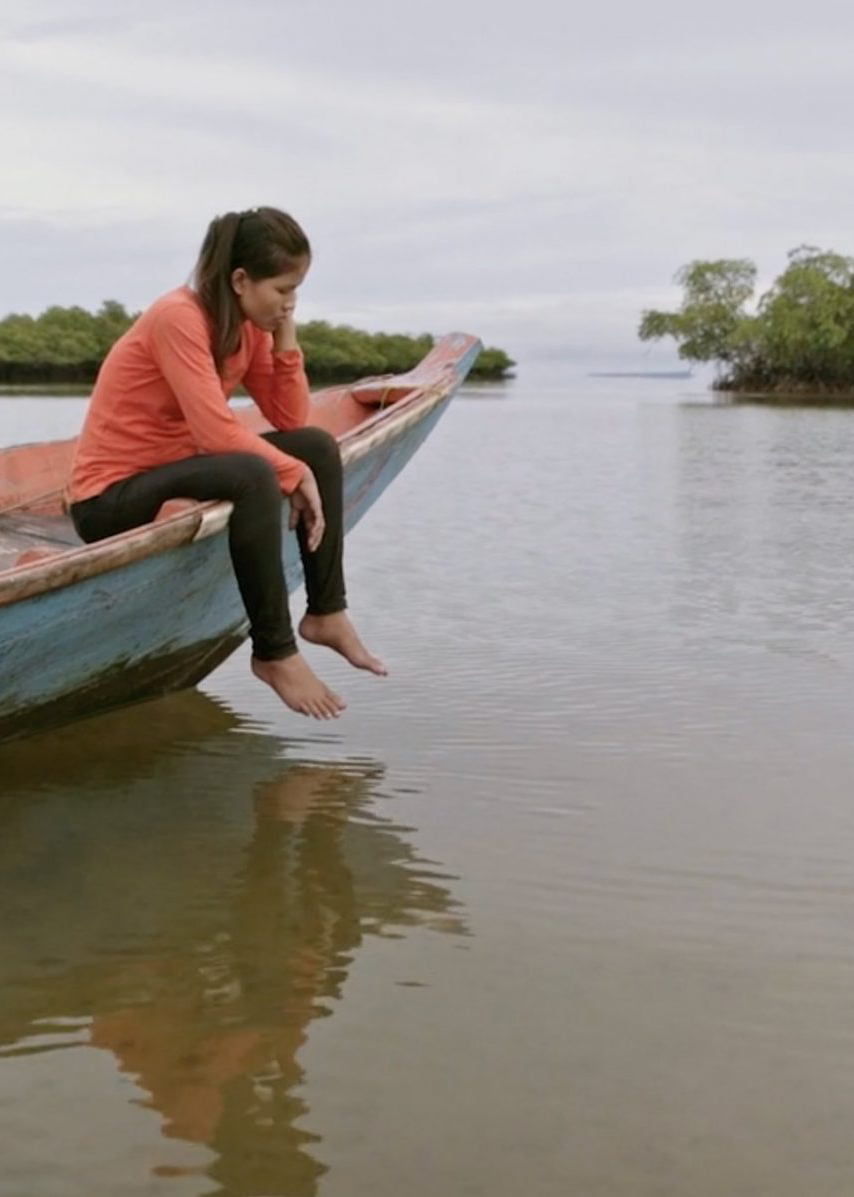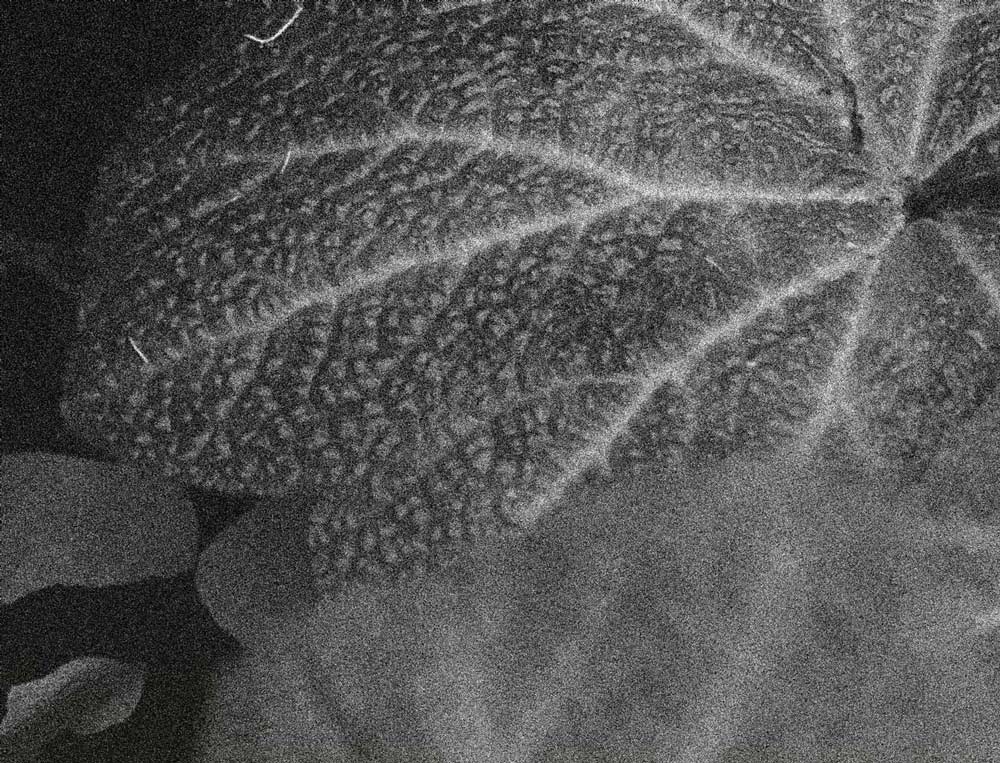
Gavin Van Horn is the Creative Director and Executive Editor for the Center for Humans and Nature. A self-described “storyforager,” Gavin’s writing seeks to capture the ongoing dialogue between humans, our nonhuman kin, and the animate landscape. He is the author of The Way of Coyote: Shared Journeys in the Urban Wilds, and co-editor of Wildness: Relations of People and Place, and City Creatures: Animal Encounters in the Chicago Wilderness.
CHICAGOLAND was directed by Ben Kauffman and created by Manual Cinema, a performance collective, design studio, and production company. Founded in 2010 by Drew Dir, Sarah Fornace, Ben Kauffman, Julia Miller, and Kyle Vegter, Manual Cinema combines handmade shadow puppetry, cinematic techniques, and innovative sound to create immersive stories for stage and screen.
A recent transplant to Chicago, Gavin Van Horn is surprised to encounter wild coyotes, mythic tricksters that now roam the urban landscape, animating our experience of the city.
The first sign was the rabbit bones.
I’m a wanderer by inclination and a walker by choice. When we moved to Chicago, our family of three gave up our car, a Honda Fit affectionately named the Trusty Grape for its dark purple hue (and as a contrast to our previous mechanical nightmare, the Silver Lemon). Life without the Grape is good. Not having to find parking or pay for anger management classes compensates for the small inconveniences of not owning a car. Another ancillary benefit is the gift of exploring the city by foot, at a pace conducive to freeranging thoughts.
In the evening, I frequent the public golf course near my condominium. Not for golf, which is another gateway to anger management classes, but for sauntering. Off a neighborhood street, under the Metra rail tracks, over a rusty bridge that spans the North Shore Channel canal, I reach the fairway of the seventeenth hole. Flanked by silver maple trees and milkweed pods, the fairway provides enough of a long view to tap my inner Watership Down, allowing me to pretend I’m strolling through a meadow in the English countryside. This is where I discovered the rabbit bones. The following evening, they were gone.
I had a vague awareness that coyotes lived in the city. I can’t remember who told me, but the news came as a welcome surprise rather than an unwelcome shock. In the first months after our move, we were renting a third-floor walk-up apartment with a window fifty feet from the elevated train (known colloquially as the “L”) that runs to and from Chicago. Reading late one night, between the periodic squeals of the train, I heard a competing set of squeals, immediately identifiable as coyote banter. My ears prickled, followed by the hairs on the back of my neck. A visceral memory came to me: I once listened to similar yips and caterwauling surround me in full stereo sound when camping in New Mexico—eerie peals of distressed laughter, redounding off high desert rock, prompting a smile and an increased pulse rate. In the apartment, I laid the book on my lap—for that moment, Chicago had become a New Mexican wilderness. I couldn’t help but smile again. Welcome to Chicago.
Later I found out that urban coyote chatter like the kind I heard that evening is somewhat unusual. In Chicago, coyotes have adapted to city living in many ways—hunting at night, typically giving us as wide a berth as they can, and keeping their vocal hysterics to a minimum. Stan Gehrt, a scientist who has studied Chicago’s coyotes for over twenty years, calls them “the ghosts of Chicago.”
But they do materialize every once in a while. My first visual confirmation of a coyote—very likely the one responsible for the rabbit bones—occurred on another set of commuter train tracks near the golf course. Unlike the “L,” the double-decker Metra train stays closer to ground. The Metra’s tracks bend outward for miles from their epicenter in downtown Chicago. One of those train lines shoots right through my neighborhood.
On a weekday morning, alongside a motley gathering of commuters, I await my eight o’clock ride to downtown Chicago. When we later detrain, the streets will be a chaos of bodies jostling without ever quite touching. But for now, we all mill about on the platform, closer to sleep than to work. The eyes of a besuited older man glaze over the Tribune. A woman brushes lint from her pant leg. A young executive grips his to-go coffee cup as though it’s a lifeline.
That’s when I see the coyote. He ambles across the double lines of railroad track, facing south, facing me, who faces him and says—too loudly, too giddily—“Coyote, coyote!” A lateral gravity draws me to the edge of the platform, where I stare in shock, even though the headlight of the train already bears down on us both. The coyote pauses for a quick check over his shoulder—perhaps setting his internal clock, having just wrapped up a night’s work—and slips down the embankment into a narrow band of shrubs. A man in a neatly ironed shirt glances up, startled by my behavior. The expression on his face wordlessly poses a question: “Drinking before work, bub?” By the time he swivels his neck, following my transfixed gaze, the city’s trickster, the wild canine ghost of Chicagoland, has melted away.
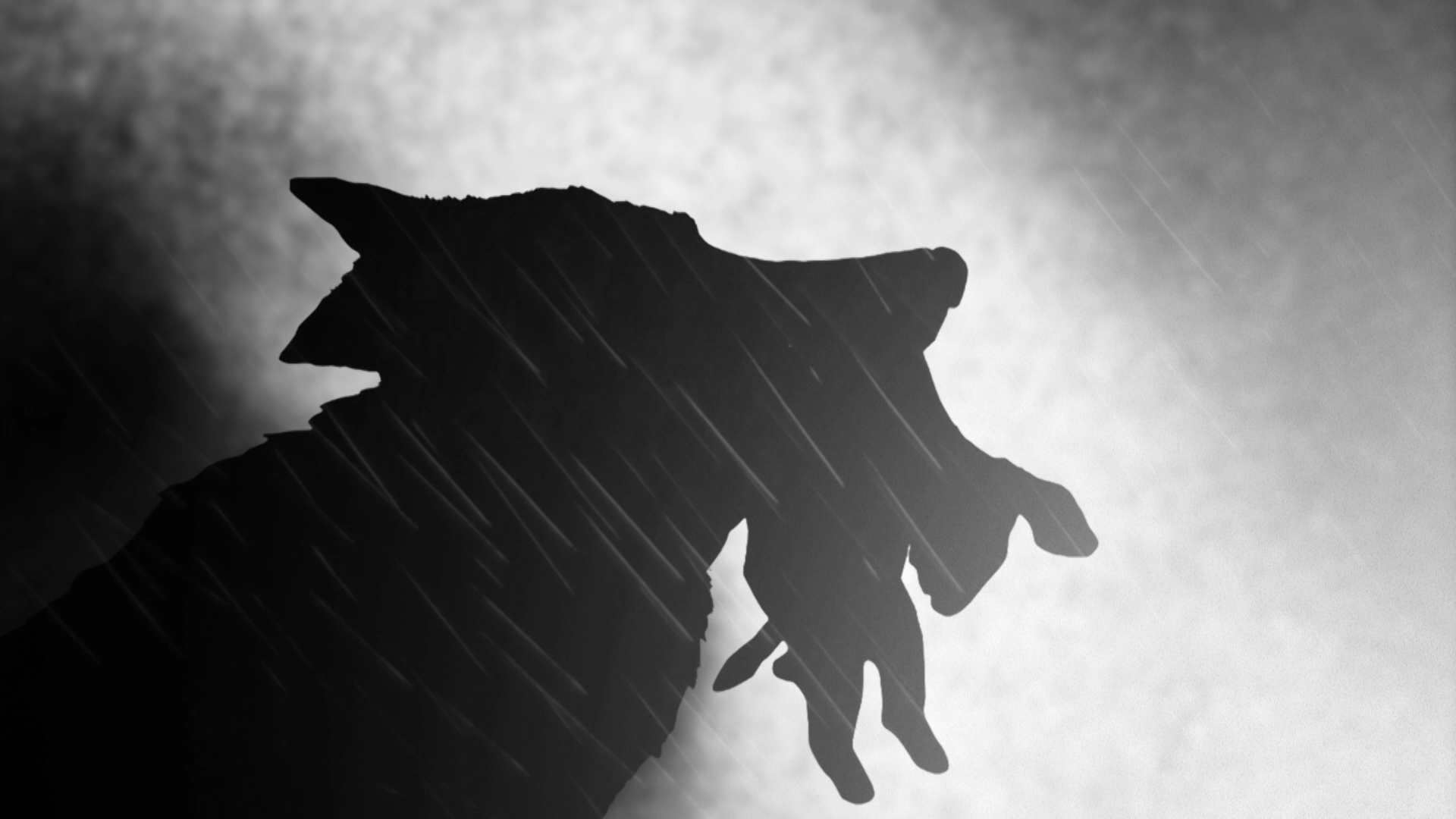
Coyote is always up to something, always on the move.
An accurate count of coyotes in Chicago is harder to find than coyotes themselves. I’ve heard rumors there are three thousand, possibly more. One thing is clear: the count is rising. Researchers removed twenty coyotes in 1989; in recent years, those figures have ranged from three hundred to four hundred relocations or euthanizations per year. That’s a lot of coyotes. Hundreds now sport radio collars, so a good deal of information is known about their movements and territorial habits, even when they choose to be spirits unseen. What these electronic data points tell us is that coyotes are not just on the outermost edges of the city. They are in our city center. Coyotes are willingly moving to Chicago.
The reclamation of city habitat by wildlife is a national (and global) trend. A number of reasons account for the urban option: prey availability, human pressures on nonurban habitat, laws against hunting and trapping in metropolitan areas. In addition to these factors, coyotes are well suited for the task of city living—quintessential adapters, they consistently defy human expectations.
If one needs an expert on the comings and goings of Chicago’s coyotes, Gehrt is the person to know.1 Out of his office at Ohio State University, he leads the largest collaborative study of urban coyotes in the world. I attended a research symposium where Gehrt showed a video that sent a wave of chuckles through the room. Traffic, a bicyclist, empty fast-food joints—an ordinary Chicago intersection at night. Then, into the camera frame, a spry coyote trots casually to the edge of the sidewalk. She waits for the stoplight to turn red. Then crosses the intersection and continues on her way. Just another night on the town.
According to Gehrt, many Chicago coyotes have learned traffic patterns within their territories. As they patrol these territorial boundaries, the coyotes who survive are those who give due deference to the laws of the street. Available statistics reinforce that what I saw on the video was not an isolated incident. Auto naïveté doesn’t serve one well in the city, two-legged and four-legged pedestrians alike, so although death by car is the leading cause of mortality for urban coyotes, it appears that many are learning and adapting to the unforgiving ways of the road.
Gehrt compares a coyote’s perspective of the city to a patchwork quilt. The average territory for a coyote family group covers two square miles, with a large degree of variance depending on available food sources. The more concentrated the prey—which includes rodents, rabbits, deer fawns, goose eggs, and whatever else is available—the smaller the territory. The boundaries of these territories remain invisible to us, but through aromatic and vocal signals, coyotes know which lines they can safely cross.
In the field and at the podium, Gehrt speaks frankly about his awe regarding coyotes’ abilities to adapt to urban environments. If it weren’t for the radio collars that allow us to peek in on how they’ve managed to make a living in the most unlikely places, he is certain no one would believe it. They’re that resourceful, that clever.
The philosopher of science Donna Haraway once wrote that our world is chock full of confounding and witty “coyote discourse,” which is “embodied in Southwest [N]ative American accounts [that] suggest the situation we are in when we give up mastery but keep searching for fidelity, knowing all the while that we will be hoodwinked.”2 Haraway is right: our lives are entangled with coyote discourse, and increasingly in the city with the discourse of actual coyotes, who remind us that wildness moves amid urban areas that we often think of as solely, or mostly, our domain. Coyotes let us know that the mental boundaries we keep—between the human and the wild—are more porous than we may have ever imagined. In the midst of our attempts to control the landscape, to put humans here and nature there, coyotes express an alternative set of ideas about boundaries. If we open our eyes, ears, and minds, a world full of coyote surprises awaits.
These notorious tricksters have escaped from their Southwestern myths and go about their business largely undetected, in cities far from their familiar haunts in Taos and Tucson. Vancouver, Portland, San Francisco, Denver, New York City—all now have thriving coyote research programs. Occasionally, a coyote makes a bold appearance. A few years ago, on a steamy summer day, one found his way into a drink cooler at a Quiznos in downtown Chicago. Such brazen acts are rare, yet more people are finding out what is known among coyotes: wildness is part of the city, if you know how to look for it. Keep your eyes and ears open. Or watch the train tracks.
Or head to a golf course at dusk. This past summer, while walking my son home from school, he and I noticed several nighthawks in the neighborhood, sweeping the air for insects. Nighthawks perform aerial acrobatics that would be well worth buying tickets for; they can slice and twist with the precision of top-gun pilots. Feeding on the wing at high speeds, they flash their white-barred underwings with mouths open wide, catching moths, gnats, flies, and other flying insects in their gaping maws. My son and I decided to take a detour to the golf course by the Channel canal, hoping the combination of insect fecundity and open space would lure the avian hunters.
What a show it was. After arriving, we got low to the ground and army-crawled on our bellies to the edge of the grass, eyes darting between birds, mouths as agape as those of the nighthawks, who were reveling in the feast on the wing. The finale, however, came courtesy of a surprise visitor. As we lay motionless, watching the birds, a flash at ground level drew our attention: one of the ghosts of Chicago. A Channel coyote sprinted across the open fairway at a full trot, returning from his own neighborhood adventures. That evening made my son’s top-ten best days of all time.
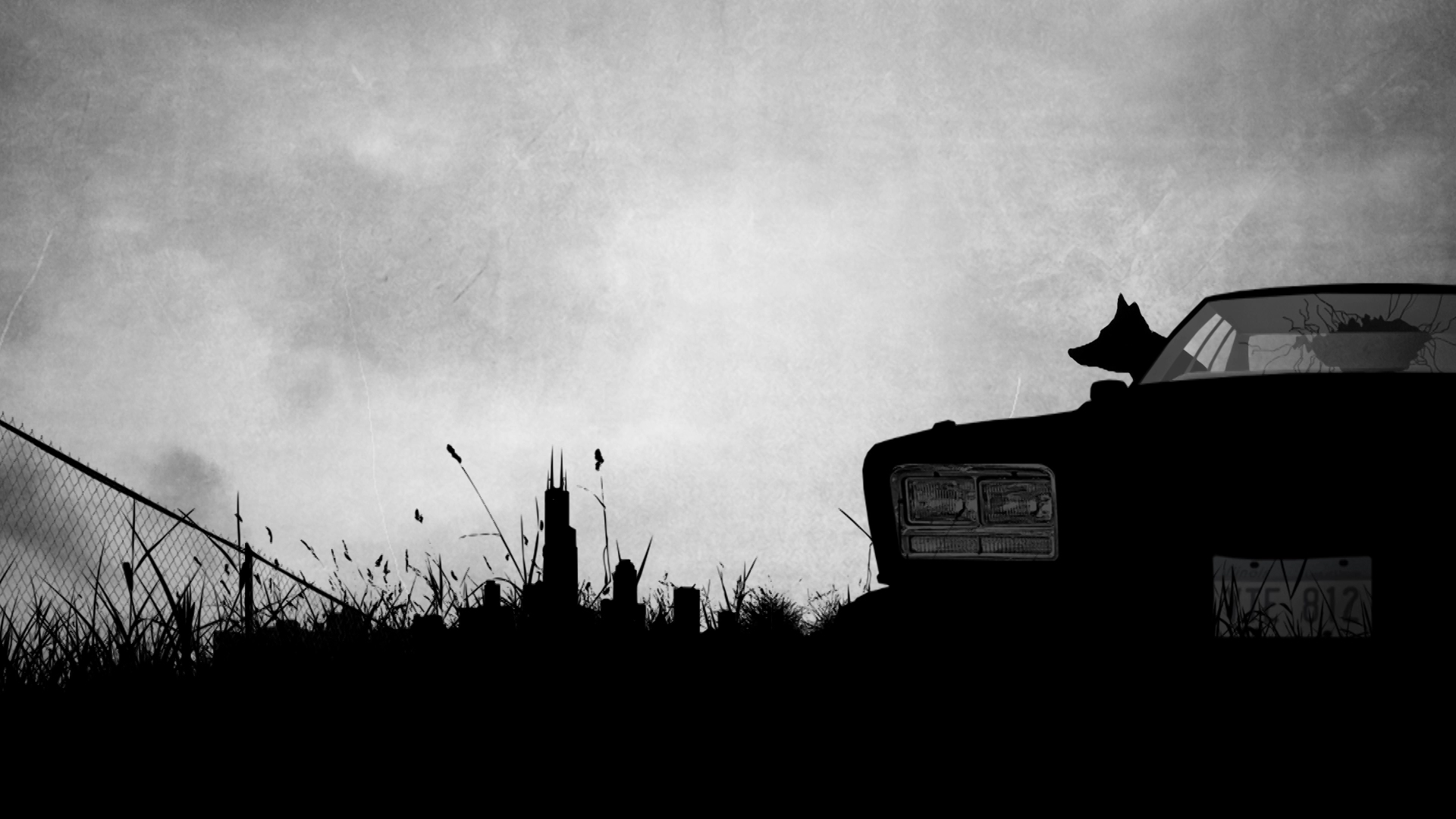
Wildness is part of the city, if you know how to look for it.
A chain-link fence runs most of the length of the Channel canal, keeping people from the water, so if you’re not willing to clamber up and over, you can get to the canal only at special access points. You can, however, see the vegetation on the Channel’s embankments from the bridges and roads that cross over the waters. When my son and I left the show that night, heading back home, we looked down and spied the hollowed-out base of a large cottonwood tree. Difficult as it was to see through evening’s gloam, we thought we could discern—just maybe—the contours of a coyote head staring back at us. My son was positively sure. Coyotes can play tricks on the mind like that.
I take a lot of walks on the golf course by the Channel. Sometimes I see the coyotes who live there; most times I don’t. Once around sundown, a flash of rufous fur vanished in the grasses just as I was turning my head. It could have been a dog—but I know what ghosts look like now.
On another walk in a gentle rain, maple and linden leaves gathering the last daylight, shadows fingering their way across the grass, I see a pair of Channel coyotes—presumably a mother and father—and come to a dead halt. They confer a few minutes as I edge closer, finally vanishing into the underbrush. I walk on, unable to shake the feeling of the encounter and the mutual gaze we exchanged as they took my measure. I check one last time over my shoulder before I reach a neighborhood street. Behind me, fifty yards away, one of the Channel coyotes leans back on his haunches, watching me.
In Make Prayers to the Raven, Richard Nelson’s ethnography of the Koyukon people of Alaska, he notes that the Koyukon believe the forest watches them to ensure that they behave respectfully toward the land and its inhabitants. According to Nelson, the Koyukon live “in a forest full of eyes.”3 Ever since I met the Channel coyotes, the city has become more animated for me—in the root sense of the word, anima : to possess breath, spirit, or soul. The Koyukon people live in a forest full of eyes. I live in a city full of eyes. Some of those eyes belong to coyotes, who are watching to see whether I learn how to adapt to a wild city.
Many Native American tales about Coyote, the trickster figure, begin with a standard opening: “Coyote was going along …” This phrasing bears some resemblance to the fairy-tale salvo “Once upon a time …” There are differences worth noting, though. “Once upon a time” locates a story in some distant world, refracted through the prism of fantasy. “Coyote was going along” suggests something else. The audience to these narratives is dropped on the trail with this character, in midstride. The events of the tale may have occurred long ago, in a distant time, but its protagonist keeps going, trotting through our present. Coyote is always up to something, always on the move.
In these stories, Coyote often finds his way into trouble, sometimes loses a limb, his intestines or anus, and occasionally he even dies. But death is not the end of Coyote. After all, he must keep going along. There will be a need for another Coyote story on another winter night.4 So, when Coyote does meet a comical or tragic end, there’s usually another animal on hand—Hare or Fox are popular resurrection specialists, depending on the tale’s region of origin—to perform a ritual, step across his body five times, and put him back together. Sometimes, Coyote possesses magic enough to put himself back together.5 He keeps going along.
I wonder if these tales reflect observations of actual coyotes’ tendency to defy death, to keep going along. Despite their severe persecution in the United States, coyotes are thriving. The numbers of coyotes killed—and the potent chemical concoctions developed to control their numbers—is shocking.6 More shocking still is the defiance of coyotes in the face of such persecution. Despite organized and well-funded eradication efforts, coyotes have overcome again and again, spreading across the country into the niches left vacated by gray wolves, their less-fortunate canine cousins. This uncanny ability to survive has much to do with coyotes’ gifts as a species, what biologists call behavioral plasticity, meaning they are adept at altering their behaviors to fit their environmental contexts. In practice, this might mean grouping together or going solo, adjusting their omnivorous diets according to opportunity or cultural learning, and, most important, producing larger litters of pups in response to perceived population declines.
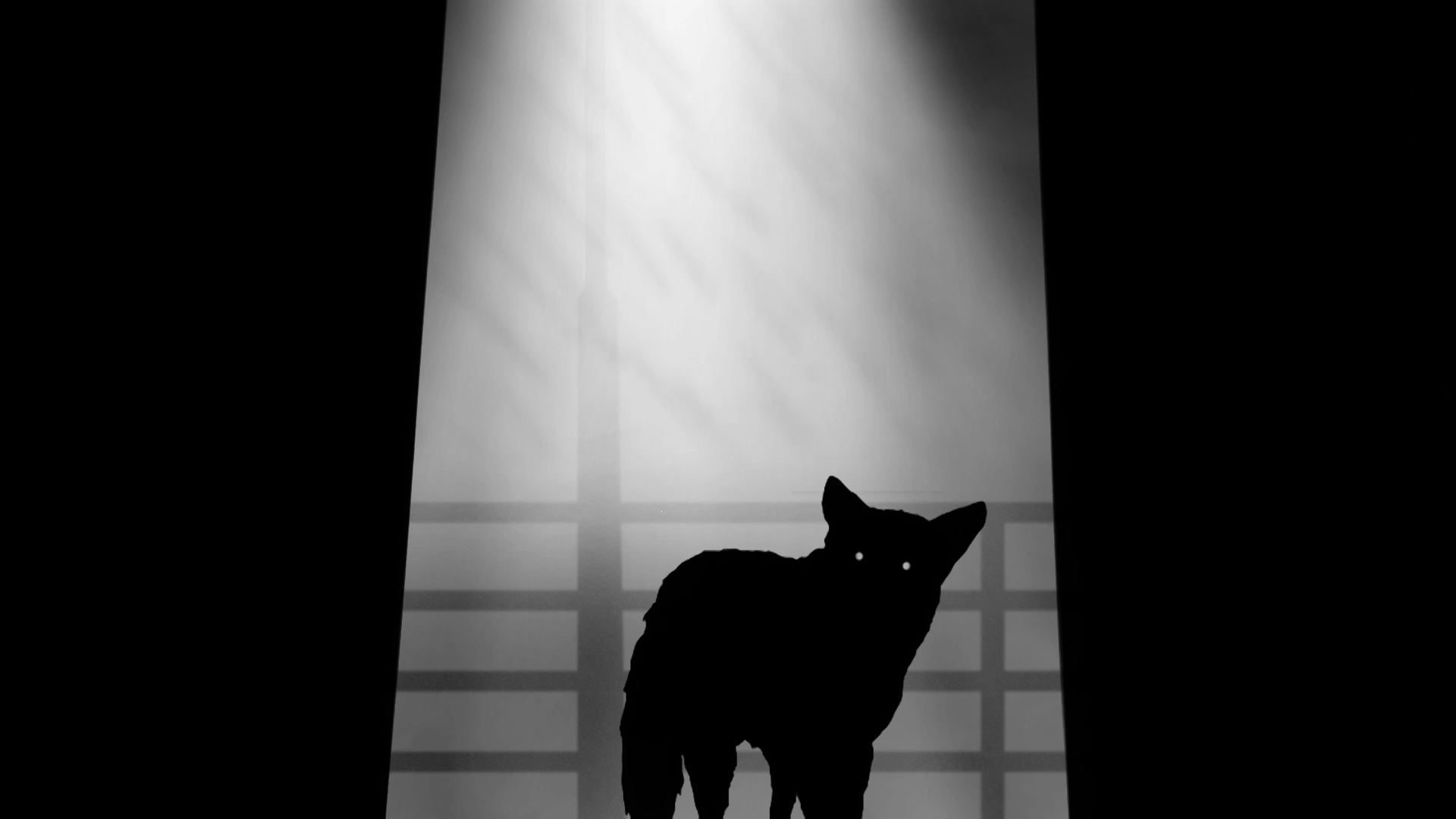
Ever since I met the Channel coyotes, the city has become more animated for me.
Try to kill off Coyote in a story and he’ll pop back up again, going along to another adventure; try to kill coyotes, and they’ll thwart your best efforts. The trickster Coyote’s real-life descendants now populate nearly every city in the United States. After being driven away, purportedly cleaned out, harassed, subjected to chemical warfare, demonized, and half-forgotten by urban dwellers, they’ve returned. I get the sense that they’ll keep finding their way among us, almost as if they are on a mission to jog our memories. This city, this land, is not exclusively yours, they seem to say; we’ll keep coming back until you get it.
It’s been a while since I’ve seen the Channel coyotes. I began to think they had moved on to more attractive urban hunting territory or that some misfortune had befallen them—possibly those deadly automobiles caught them in a moment of distraction, when they were preoccupied with a rabbit nibbling grass in someone’s front yard. Then, as I was cutting across the golf course late one night, I saw a canine silhouette through the darkness. Only for a moment. Still going along.
I walk on, immersed within the city like the Channel coyotes, adopting it as my own, scratching out a place in abundance, exploring the margins for life and further connection. As an urban transplant, I sometimes feel a long way from home and a long way from my ancestors. When the city presses in upon me, coyotes remind me of the vitality that weaves its way between the buildings. Humans may often disregard, displace, and disrupt other kinds of animal life, but the anima of what we now call Chicago is not gone. The coyotes keep it flowing; they keep going along, beckoning us toward greater fidelity with our nonhuman kin. Lead on, coyotes. Show what a city can be.
Reprinted with permission. This essay is excerpted from the forthcoming book, The Way of Coyote, by Gavin Van Horn, © 2018 by the University of Chicago Press. All rights reserved.
- More on Stan and his work, including published scientific papers and the kinds of research he and his team do, can be found at the website of the Urban Coyote Research Project, at https://urbancoyoteresearch.com.
- Donna Haraway, “Situated Knowledges: The Science Question in Feminism and the Privilege of Partial Perspective,” Feminist Studies 14, no. 3 (Autumn 1988): 593–94.
- Richard Nelson, Make Prayers to the Raven: A Koyukon View of the Northern Forest (Chicago: University of Chicago Press, 1983), 14.
- Coyote stories were traditionally told in the wintertime, as Barre Toelken remarks, “only after the first killing frost and before the first thunderstorm—that is, in wintertime as defined by nature itself” (in Barry Lopez, Giving Birth to Thunder, xiii). There are exceptions, according to Jay Miller, who notes that “the best Coyote stories are usually heard at wakes while family and friends are siŒtting up all night with the deceased. During the darkest of the night, old ladies will begin to tell the most outrageous stories, helping to relieve the grief and keep everyone awake” (in Mourning Dove, Coyote Stories, ix).
- In Mourning Dove’s telling of “The Spirit Chief Names the Animal People” in Coyote Stories, we get one perspective on the origins of this life-restoring power. After giving Coyote the ability to change into any form he wishes, the Spirit Chief declares: “To your twin brother, Why-ay’-looh, and to others I have given shoo’-mesh [medicine]. It is strong power. With that power Fox can restore your life should you be killed. Your bones may be scaŒttered but, if there is one hair of your body left, Fox can make you live again. Others of the people can do the same with their shoo’-mesh” (23). For an example of Coyote puttŒing himself back together after taking himself apart, see Lopez, Giving Birth to Thunder, 95.
- Nor was this confined to coyotes. Wolves, mountain lions, and bears suffered tremendous losses across the United States, as did non-target populations of birds and small mammals who fed on poisoned carcasses and baits. In Coyote America, Dan Flores recounts the justifications for such “control” efforts in some detail, as does Michael Robinson in Predatory Bureaucracy: The Extermination of Wolves and the Transformation of the West (Boulder: University Press of Colorado, 2005). Bounties and strychnine were the killing methods most utilized by stockmen in the nineteenth century, but by the early twentieth century, the government was manufacturing its own supply of strychnine, and coyote killing had been bureaucratized. By the mid-1920s, according to Flores, “this scorched-earth policy against coyotes yielded some 35,000 dead coyote bodies a year” (102–3). Once the science of ecology was beŒtter established and the justification for killing large- and medium-sized carnivores was shown to rest on ideological premises, voices raised against such indiscriminate killing began to swell. Yet the slaughter continued. From 1945 to 1971, 3.6 million coyote carcasses were “collected” by federal agents (Flores, Coyote America, 147). Even today, as Flores notes, the federal agency Wildlife Services kills around eighty thousand coyotes a year, mostly on western rural lands (157, 177).
